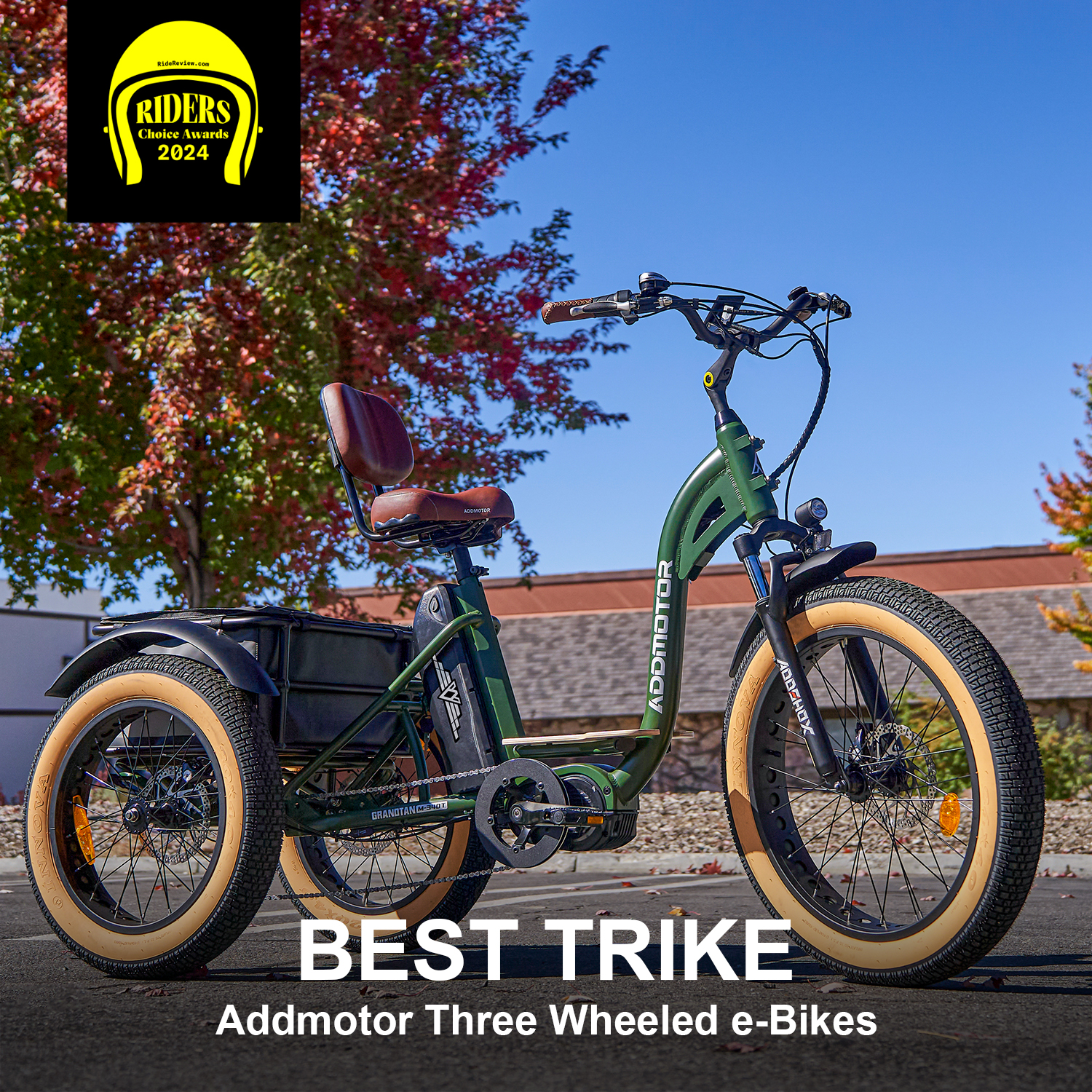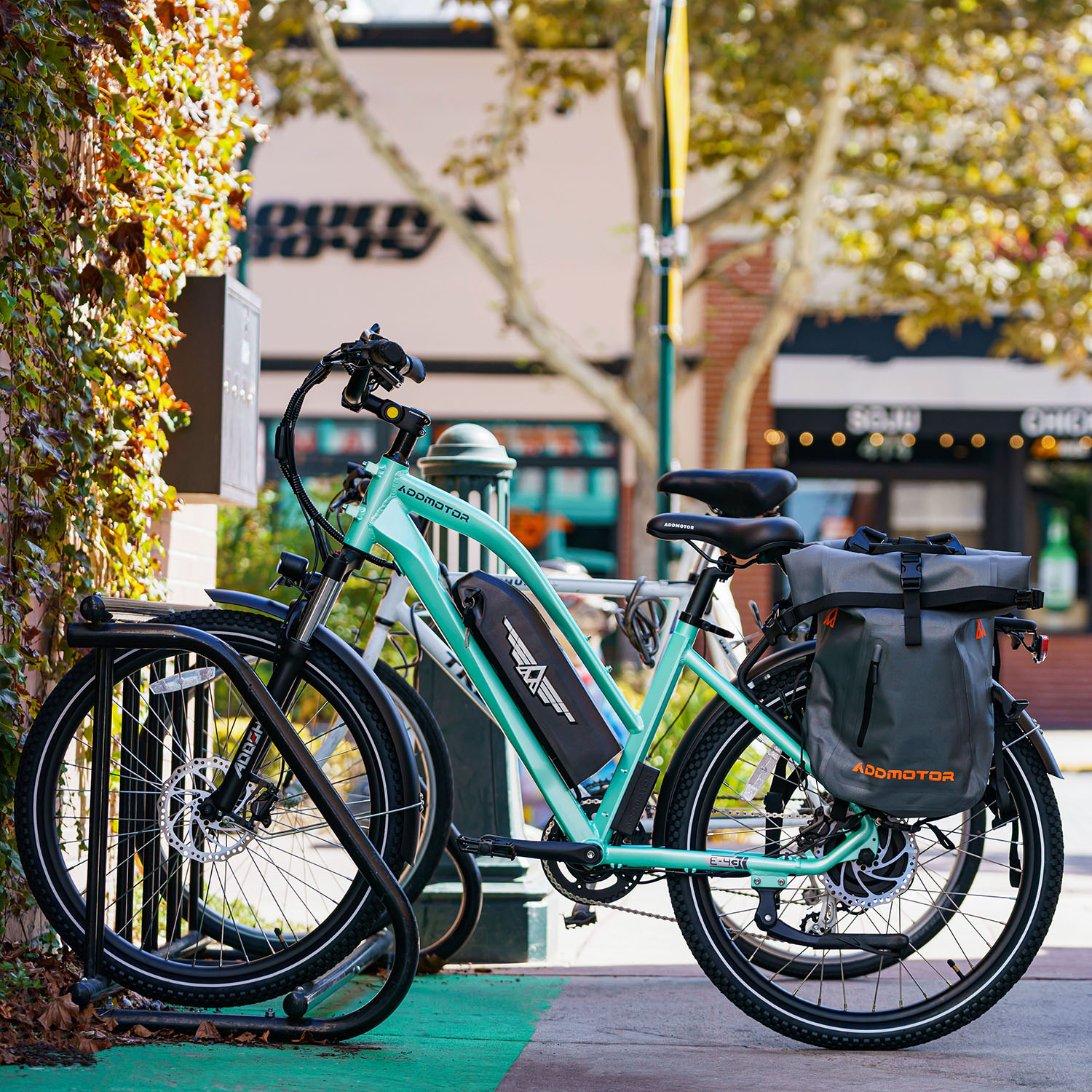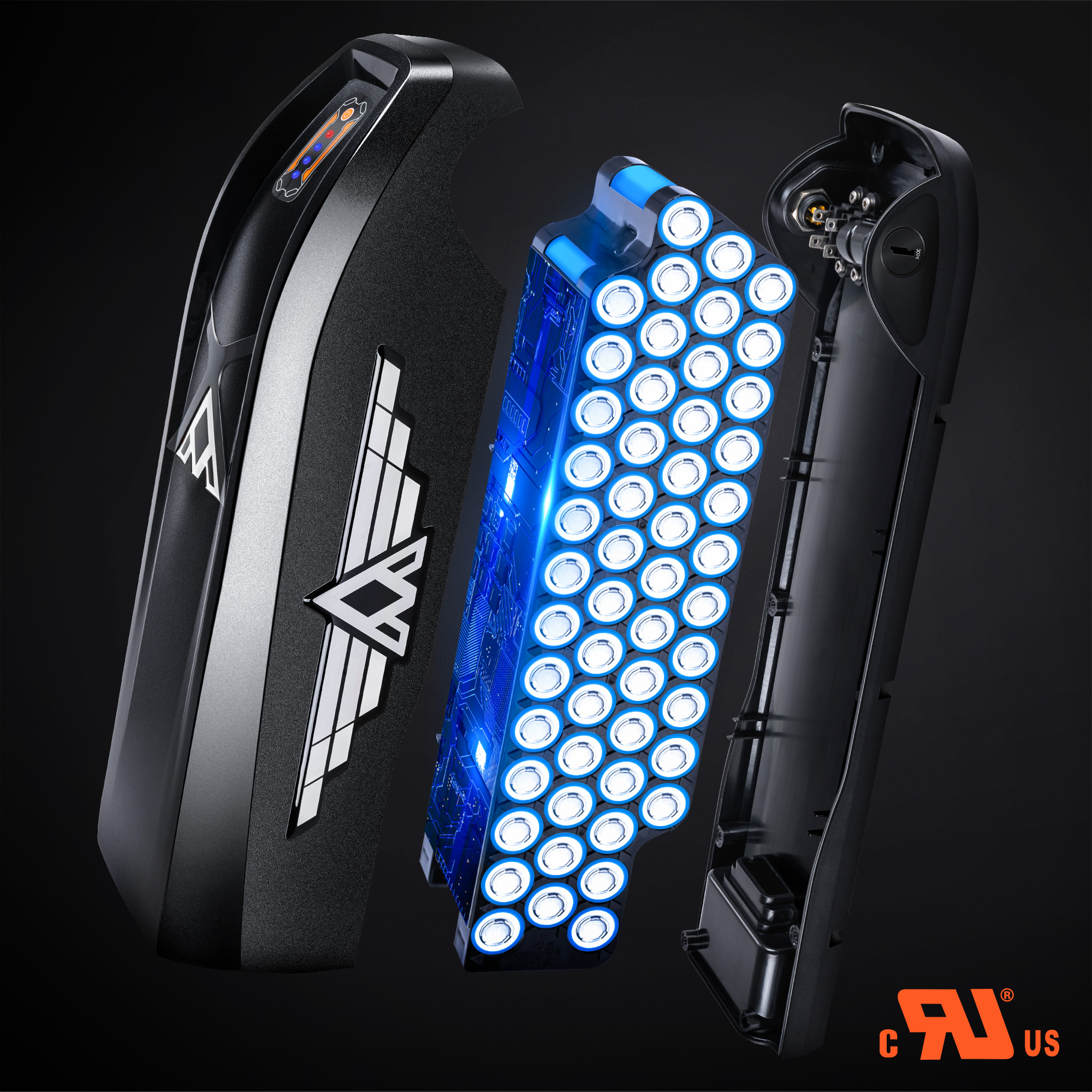ADDTECH | Ebike Mechanical Components - Wheels & Tires
By Addmotor | 29 March 2024 | 0 Comments
When it comes to electric bikes, every component matters, but perhaps none more so than the wheels and tires.
These essential elements serve as the direct interface between your bike and the ground, shaping your ride quality and overall performance. From absorbing impacts to providing stability, the role of e-bike wheels cannot be overstated.
Thus, in this guide, we will dive into the fascinating world of e-bike wheels, exploring the diverse types and sizes available and uncovering how these differences can profoundly impact your riding experience and safety.

So, let's start with the rim sizes of the e-bike tire, which is the outer part of the wheel. Rims, typically crafted from carbon or aluminum, serve multiple functions including providing a braking surface, supporting the rider's weight, securing the tire, and absorbing impacts.
Here's why correct rim size matters:
These wheels are perfect for quick acceleration and nimble maneuverability, allowing riders to navigate crowded streets and execute tight turns easily. Despite their compact size, small wheels like those on the Addmotor Citytri E-310 are durable and suitable for various terrains.
With a higher top speed and smoother ride, medium wheels can tackle steeper hills and rougher roads better, while providing better visibility and safety than smaller wheels. They are perfect for riders seeking a smooth ride without compromising speed, whether for off-road adventures or casual commuting.
However, it's worth noting that they may come with some drawbacks. Due to their larger size, these wheels can be heavier and more challenging to maneuver compared to smaller wheels.
Known for their excellent shock absorption and stability, large wheels offer a comfortable and enjoyable ride. However, they may be too large and heavy for some riders and may require more maintenance and care than smaller wheels.
Typically measuring 3.8 inches or wider, these tires are commonly found on fat bikes and mountain bikes designed for off-road adventures, gravel floors, tarmacs, pavements, beaches, and even snow.
Here are the benefits of owning a fat tire-
These tires are narrow, measuring between 23 and 32 mm in width, and offer several advantages:
The selection of wheels and tires is not merely a functional decision, but a reflection of your lifestyle and the terrain you ride on. But remember, the perfect tire not only improves your ride quality but also guarantees safety and durability for your e-vehicle.
By selecting the right electric tires and wheels, you can elevate your riding experience to new heights. I hope this guide helps you make informed decisions about wheel size and type. Enjoy the ride and stay safe out there.
These essential elements serve as the direct interface between your bike and the ground, shaping your ride quality and overall performance. From absorbing impacts to providing stability, the role of e-bike wheels cannot be overstated.
Thus, in this guide, we will dive into the fascinating world of e-bike wheels, exploring the diverse types and sizes available and uncovering how these differences can profoundly impact your riding experience and safety.

Electric Bike Wheels Basics
Electric bike wheels are made up of two main components: the rims and the tires.So, let's start with the rim sizes of the e-bike tire, which is the outer part of the wheel. Rims, typically crafted from carbon or aluminum, serve multiple functions including providing a braking surface, supporting the rider's weight, securing the tire, and absorbing impacts.
Here's why correct rim size matters:
♦ Tire Compatibility: Different rim sizes are designed to accommodate specific tire sizes. Appropriate rim size ensures proper tire fitment, enhancing safety and performance. In contrast, incorrect rim sizing can lead to tire blowouts, increased resistance while rolling, and compromised handling on the road or trail.
♦ Stability and Handling: The size of the rim directly impacts the stability and handling of the e-bike. Smaller rims offer better responsiveness and maneuverability, making them suitable for agile riding styles. In contrast, larger rims provide improved rollover capabilities and stability, allowing riders to tackle rough terrain with confidence.
♦ Performance and Efficiency: Rims significantly influence the e-bike's performance and efficiency. The appropriate rim type enhances climbing abilities and acceleration, creating a smoother and more enjoyable riding experience.
So, What are the Electric Bicycle Wheel Sizes?
♦ Small Wheels (16–20 inches):
Commonly found on folding ebikes and compact etrikes, small wheels offer agility and convenience for urban commuting and storage in tight spaces. They are perfect for quick acceleration and nimble maneuverability. These wheels are perfect for quick acceleration and nimble maneuverability, allowing riders to navigate crowded streets and execute tight turns easily. Despite their compact size, small wheels like those on the Addmotor Citytri E-310 are durable and suitable for various terrains.
♦ Medium Wheels (24”):
24” wheels are the all-rounders, striking a balance between stability and agility. These wheels offer a blend of stability and agility, making them ideal for versatile commuters. With a higher top speed and smoother ride, medium wheels can tackle steeper hills and rougher roads better, while providing better visibility and safety than smaller wheels. They are perfect for riders seeking a smooth ride without compromising speed, whether for off-road adventures or casual commuting.
However, it's worth noting that they may come with some drawbacks. Due to their larger size, these wheels can be heavier and more challenging to maneuver compared to smaller wheels.
♦ Large Wheels (26” and above):
Larger wheels provide smoother rides over rough terrain and offer superior momentum once in motion. These wheels boast the highest speed and performance among all wheel sizes. They are also capable of handling any terrain, from smooth and flat paths to technically challenging off-road routes. Known for their excellent shock absorption and stability, large wheels offer a comfortable and enjoyable ride. However, they may be too large and heavy for some riders and may require more maintenance and care than smaller wheels.
Different Categories of Electric Bicycle Tires
E-bike tires can be categorized based on two main factors: the type of terrain you'll be riding on and your personal riding preferences.Road Tire
Road tires are slim, usually measuring between 23 and 25 mm wide, and they're light in weight. They're great for riding on smooth asphalt roads, offering easy acceleration and a feeling of lightness for the rider. However, they can be slippery in wet conditions.Mountain Bike Tire
Mountain bike tires are wide and sturdy, with a grippy tread that offers excellent traction on challenging terrains like sand, grass, and dirt. They're ideal for off-road riding and are made from natural rubber, known for its superior traction.Cyclocross Tire
A tire of versatility, the cyclocross variant emerges as a hybrid, typically ranging from 30 to 33 mm wide. They're slightly wider than road tires and often have flat or slightly patterned treads, or even small studs, to provide better traction on muddy surfaces.Commuting Bike Tire
Commuting bike tires are designed for riding on rough surfaces like asphalt or concrete, which commuters encounter daily. These tires have flat, smooth treads or all-weather patterns that offer safety and stability. They usually range from 28mm to 42mm wide, providing better grip and comfort with lower tire pressure and more air capacity.BMX Tire
These tires are wider and more robust than mountain bike tires, with chunky tread patterns. They come in 20-inch sizes for most BMX bikes, though larger frames might have 24-inch tires. Different tread widths and patterns are used for various BMX riding styles, such as freestyle BMX, which requires grip and soft landings, and racing BMX, which needs high pressure for speed.Choosing the Right Electric Bicycle Wheel: Fat Tires or Thin Tires?
Depending on the specific model, an e-bike can come equipped with either fat or thin tires. Understanding the characteristics of each type is important to determine which one is best suited for your needs.1. Fat Tire
Fat tires have become increasingly popular among e-bike enthusiasts due to their unique wide profile and large air volume, which provide a range of benefits.Typically measuring 3.8 inches or wider, these tires are commonly found on fat bikes and mountain bikes designed for off-road adventures, gravel floors, tarmacs, pavements, beaches, and even snow.
Here are the benefits of owning a fat tire-
♦ Increased Traction for Versatile Terrain: The larger surface area contact of fat tires provides unparalleled traction on loose surfaces such as sand and snow, as well as on rugged off-road trails.
♦ Enhanced Stability for a Confident Ride: The wide footprint of fat tires contributes significantly to stability, a key factor in ensuring a safe and enjoyable ride, and instills confidence. On smooth surfaces like roads, they help prevent sliding and maintain control, while on rougher paths, they aid in balancing over obstacles such as stumps, ruts, or rocky terrain.
♦ Superior Shock Absorption for a Smooth Ride: Fat tires excel in absorbing bumps and vibrations, resulting in a smoother and more comfortable ride, even on rough terrain. The big size of fat tires gives them a natural suspension and helps absorb shocks and vibrations.
However, they also come with their drawbacks
♦ Fat tires tend to be heavier and exhibit higher rolling resistance on smooth surfaces, which may affect overall speed, maneuverability, and acceleration.
♦ If your main focus is speed, you might get disappointed with fat tires.
♦ Sometimes their wide profile limits their ability to make tight and quick turns.
2. Thin Tire
Thin tires are commonly found on high-performance road bikes and commuter e-bikes like the Addmotor CityPro series and CityTri E-310. Unlike fat tires, thin tires use less rubber and are therefore lighter, making them more efficient and easy to handle. They are best suited for flat roads.These tires are narrow, measuring between 23 and 32 mm in width, and offer several advantages:
♦ Efficiency: With their narrow profile and minimal tread pattern, thin tires minimize rolling resistance, allowing for efficient pedaling and increased speed on smooth surfaces.
♦ Maneuverability: The sleek design of thin tires facilitates agile handling and quick acceleration, making them ideal for navigating crowded streets and busy intersections.
♦ Weight Considerations: Thin tires contribute to a lighter overall bike or trike weight, enhancing portability and ease of handling, especially during storage or transportation.
♦ Suitability: They excel in urban commuting scenarios, offering a responsive and nimble ride on paved roads and bike lanes for daily transportation needs.
However, thin tires also have some shortcomings:
♦ They are primarily designed for smooth surfaces and may not perform well on slippery or loose terrain.
♦ Offer less cushioning compared to fat tires, resulting in a less comfortable ride with minimal shock absorption.
♦ They have lower puncture protection and are not as sturdy as fat tires, making them more susceptible to damage.
Electric Bike Tire Analysis
To better understand the difference between fat and thin tires, let's compare two different models from Addmotor: the Addmotor CityTri E-310 and the Soletan M-66X Electric Bike.| Categories | Thin Tires (CityTri E-310) | Fat Tires (Soletan M-66X) |
| Application | Urban mobility, efficiency, maneuverability | Challenging terrain, exceptional traction, shock absorption |
| Tire Size | 20" X 2.4" F/ 18" X 2.4" (mini version) | 20" X 4.0" (GIGAS Puncture-resistant) |
| Terrain | Paved surfaces, urban commuting, recreational riding | Sand, snow, rocky trails |
| Performance | Optimal for city commuting, provides efficiency and maneuverability | Superior traction, smooth ride, shock absorption |
| Ride Experience | Comfortable and smooth, suitable for urban environments | Confident and stable, ideal for off-road exploration |
| Special Features | Low rolling resistance for better speed and efficiency | Puncture-resistant design for added reliability |
In Conclusion,
The selection of wheels and tires is not merely a functional decision, but a reflection of your lifestyle and the terrain you ride on. But remember, the perfect tire not only improves your ride quality but also guarantees safety and durability for your e-vehicle. By selecting the right electric tires and wheels, you can elevate your riding experience to new heights. I hope this guide helps you make informed decisions about wheel size and type. Enjoy the ride and stay safe out there.
Leave a Reply
Your email address will not be published.Required fields are marked. *
Latest Stories

_1713256451.jpg)


